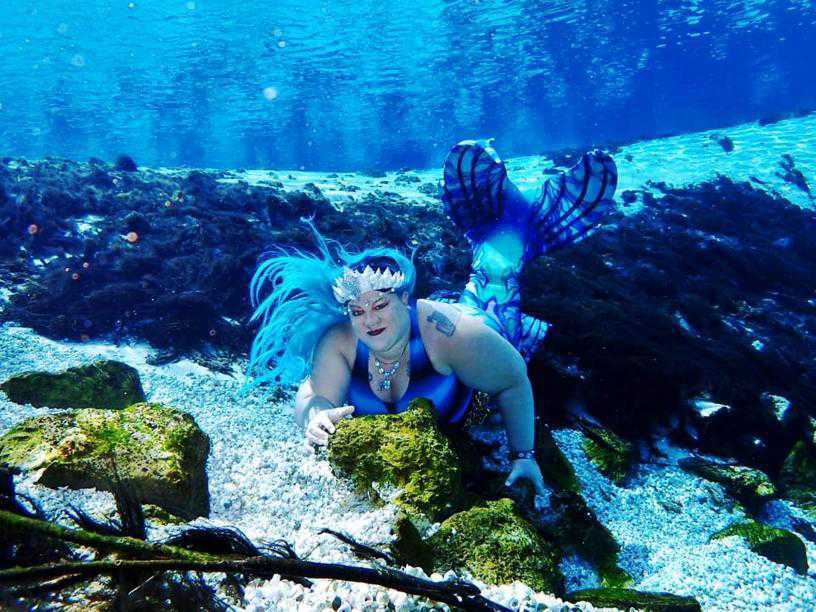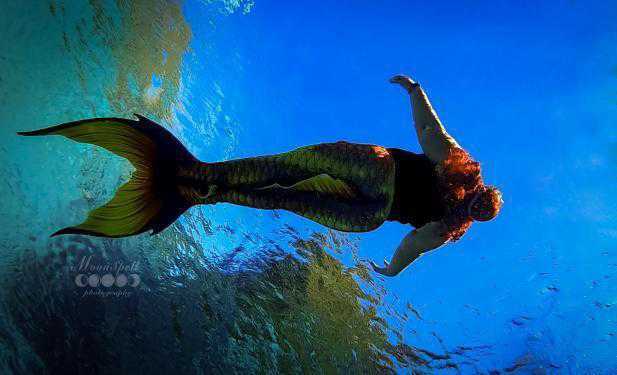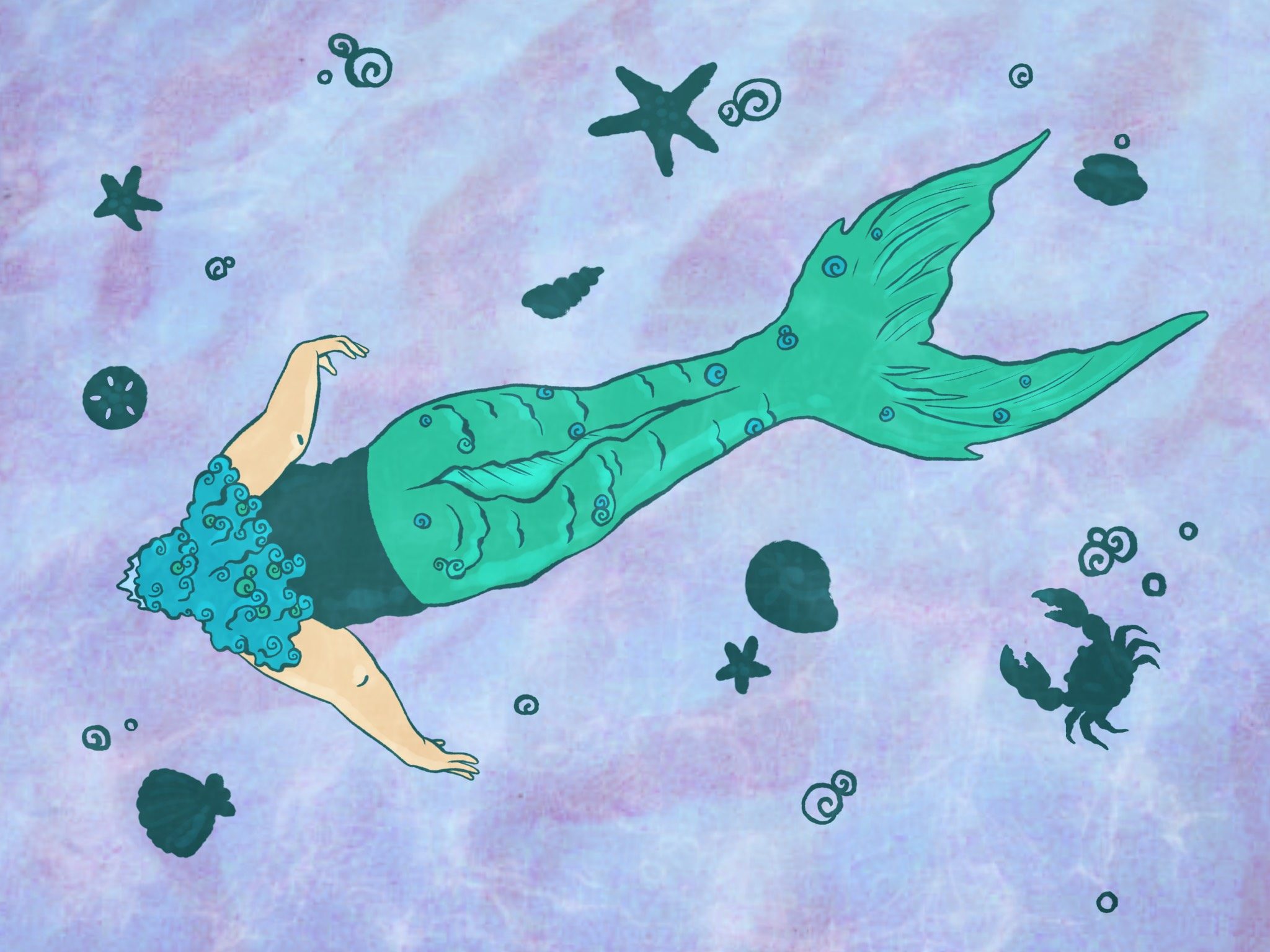Illustration by staff illustrator Sakura Siegel.
Think of the word “mermaid.”
Your mind probably goes straight to cartoons and TV shows who portray mermaids as women with long hair who sprout a tail the moment they touch water.
While a professional mermaid’s transformation requires a bit more work than just touching water, the results are no less magical.
But what is a “professional” mermaid?
Mermaiding can be both a profession and hobby, according to AquaMermaid. Professional mermaids often swim in live, filmed or photographed productions or shows and can be hired for special events.
I spoke with Smokie West — whose pseudonym is Coralispearl — a 43-year-old professional mermaid from Florida, who is an advocate for special needs children and teaches college at night.
What made you want to become a mermaid?
“I have dreamt of being a mermaid since I was a little girl.
I have always wanted a mermaid tail with a manatee style fluke.
About 12 years ago, I met Eric Ducharme, the owner of Mertailor. He was swimming in a river in this magical tail and it just rekindled my innermost dream of wanting to be a mermaid. I talked to him and he said that no one really made tails for bigger people at that time.
He didn’t say it to be malicious, but I just felt like ‘oh, well there went that dream.’
So eight years ago I got my first monofin and I hid it from everyone, but my husband and a friend. Honestly, I didn’t think I would ever fit into a tail because they only went up to an extra large. One day I bought a used extra large Mertailor and it was actually too big for me so I went down to a size large.”

A monofin is a type of swimfin typically used in underwater sports such as free-diving. It consists of a single or linked surface attached to both of the diver’s feet.
The price of a monofin could go up to a few hundred dollars, though for those who do buy them, they most certainly are worth the cost.
According to West, the consequences of a cheap monofin not made for certain depths can range from entrapment to drowning.
While living the lifestyle of a professional mermaid, some have full or even partial support from those around them, others do not. Just like any other job and or hobby, not everyone understands the draw or appeal of Mermaiding.
Do you feel like your family supports you in this?
“At first, everyone in my family, except my husband, disapproved.
My father was vocal in his disapproval at the beginning because of my professional jobs, which is understandable. My daughters were neutral about it. They just thought ‘ok, mom’s having a phase.’
Then my oldest daughter started swimming with me after Christmas last year. My middle child was always encouraging, but became fully supportive around six months ago.
My youngest daughter was neutral and then expressed her negative opinion about six months ago.”
Outside of birthday parties, there are many shows and attractions that employ professional mermaids. Aquariums often employ mermaids as part of temporary or yearly attractions. But what made being a mermaid so enjoyable for West to take this up as a profession?
What do you like most about being a Mermaid?
“Inspiring others to move beyond their fears and bringing joy to others, both in person and through my social media.
I love helping other people see that their size doesn’t matter or define their dreams. Weight and size should never stop you from trying things.”

West, who is in the process of becoming a mermaid instructor for a global diving company, admits to mentoring and helping around 200 mermaids with various things and says she “cannot wait to impact many more people who want to develop their skills.”
Most mermaids and instructors advise against using a tail and fin without prior training and or practice, I asked West about her personal experience.
How long did it take you to learn to use your tail?
“For the monofin, it took me probably two or three months of weekly practice to get used to it.
Every monofin has a little bit of a learning curve to them, but now it usually takes me a few laps and I am able to swim with any monofin.”
As I learned more about mermaiding, I noticed many mermaids — particularly those on social media — are seen mostly in either a specific tail, or specific color tails.
West said she started with pink and purple tail colors before gradually moving to yellow colors. Now, she’s expanded her options for events and swimming overall.
Many mermaids also wear a variety of accessories, made for swimming, like tiaras, bangles, necklaces, rings and horns.
Do you wear accessories underwater? If so, how difficult is it to keep them in place?
“I have a lot of underwater accessories.
All of my crowns are custom made by Enchanted Mermaid Designs so they are meant to go underwater, with the exception of a crown I ordered from Canada.
All of my custom silicone tops are made by Mermaid Me. I find custom jewelry and other accessories from small business owners on Instagram and Etsy.”
What happens if there needs to be maintenance such as if her tails or hair require any repairs or treatments.
West notes she applies a reef safe product to her real hair before she goes swimming and sprays it with the same products to her wigs whenever she gets out.
Do your tails require any maintenance, apart from cleaning that is- on any regular basis?
“Each time I go swimming my husband cleans them for me and it’s a lot of work.
Before and after every swim, you have to make sure you check the hems, seams, and zippers to make sure nothing comes apart. For silicones, you have a lot more maintenance and care.”
Stay tuned! We are diving deeper in Part 2!


